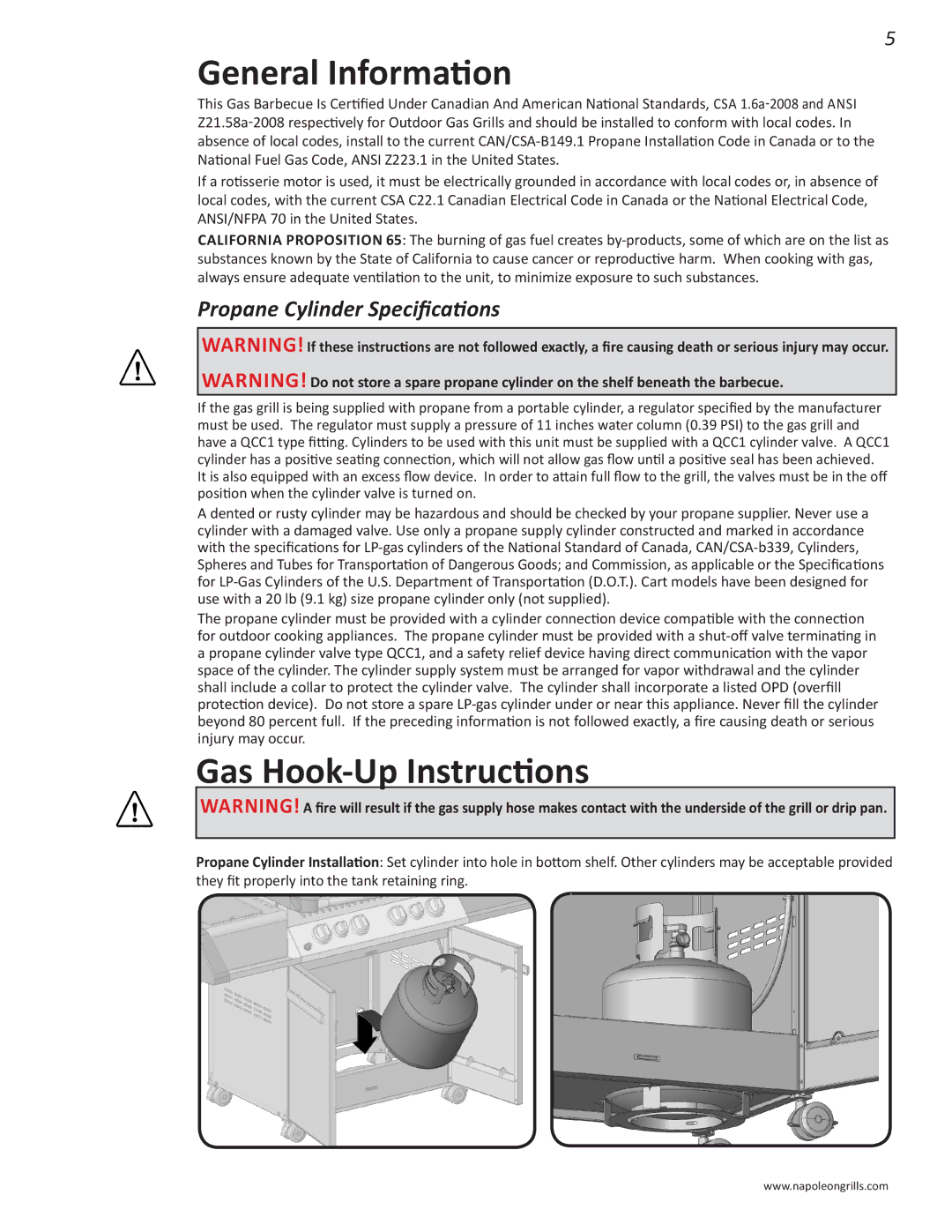
5
General Information
This Gas Barbecue Is Certified Under Canadian And American National Standards, CSA
If a rotisserie motor is used, it must be electrically grounded in accordance with local codes or, in absence of local codes, with the current CSA C22.1 Canadian Electrical Code in Canada or the National Electrical Code, ANSI/NFPA 70 in the United States.
CALIFORNIA PROPOSITION 65: The burning of gas fuel creates
Propane Cylinder Specifications
WARNING! If these instructions are not followed exactly, a fire causing death or serious injury may occur. WARNING! Do not store a spare propane cylinder on the shelf beneath the barbecue.
If the gas grill is being supplied with propane from a portable cylinder, a regulator specified by the manufacturer must be used. The regulator must supply a pressure of 11 inches water column (0.39 PSI) to the gas grill and have a QCC1 type fitting. Cylinders to be used with this unit must be supplied with a QCC1 cylinder valve. A QCC1 cylinder has a positive seating connection, which will not allow gas flow until a positive seal has been achieved. It is also equipped with an excess flow device. In order to attain full flow to the grill, the valves must be in the off position when the cylinder valve is turned on.
A dented or rusty cylinder may be hazardous and should be checked by your propane supplier. Never use a cylinder with a damaged valve. Use only a propane supply cylinder constructed and marked in accordance with the specifications for
The propane cylinder must be provided with a cylinder connection device compatible with the connection for outdoor cooking appliances. The propane cylinder must be provided with a
Gas Hook-Up Instructions
WARNING! A fire will result if the gas supply hose makes contact with the underside of the grill or drip pan.
Propane Cylinder Installation: Set cylinder into hole in bottom shelf. Other cylinders may be acceptable provided they fit properly into the tank retaining ring.
www.napoleongrills.com
